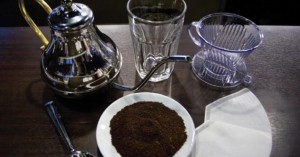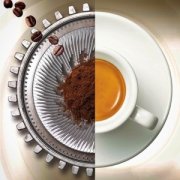Coffee Encyclopedia talk about the factors that affect the taste of coffee
Coffee beans from picking, refining, roasting to grinding and extraction, each step will affect the taste. But there are only two things in everyone's hands: "water temperature and water quantity". After all, coffee is a precious liquid.

First of all, the water temperature, traditional baristas think that 82-83 degrees Celsius is suitable for all baked water temperature, it is very average. Water below 80 degrees can suppress bitterness, but never less than 76 degrees. Water above 85 degrees can extract bitter taste, which is more suitable for deep baking beans. Brewing coffee with boiling water is very easy to produce bubbles, resulting in incomplete steaming.
Then there is a tip: if the baked beans are kept at room temperature for more than two weeks, it is recommended to use high temperature extraction, above 90 degrees can effectively avoid too light taste.
In addition, it is difficult to master the amount of water, which is to keep the water from the thin-mouth pot uniform and the amount of water is the same. The basic method is: the spout is 3-4 cm high from the coffee powder, and the water column is perpendicular to the coffee noodles.
A skilled barista will pour out part of the pot before the first injection of hot water into the coffee powder, because the water in the spout is warmer than that in the kettle. Baristas try to get rid of these nuances.
It really takes a lot of practice to extract a cup of coffee of sufficient quality. The basic control of "water temperature and water quantity" more than a dozen times can also make you look like a veteran and definitely have a sense of achievement.
Important Notice :
前街咖啡 FrontStreet Coffee has moved to new addredd:
FrontStreet Coffee Address: 315,Donghua East Road,GuangZhou
Tel:020 38364473
- Prev

Coffee knowledge how to drink espresso
People with good taste seem to have a predestined relationship with coffee. The real coffee must be tasted in three mouthfuls. The little bit of round and meticulous Espresso cups and plates have brought precious, thick brown, a little bit of golden grease, and a little bit of liquid has brought expectation to the vision and taste. Espresso has three mouthfuls: one mouthful of its mellow stimulation, two mouthfuls of its soft and sweet fragrance at the bottom of the cup is not complete.
- Next

Coffee utensils using siphon pot tutorials
The siphon coffee pot, also known as the plug Pot, is made by Scottish Navy engineer Robert Naiphir. It was invented in 1840. It is not difficult to make a cup of coffee with a siphon pot, mainly to pay attention to some details. Such as: visual inspection, temperature control and so on. This requires us to pay attention to what needs to be done in each link from the very beginning. There is a saying called detail decision.
Related
- Beginners will see the "Coffee pull flower" guide!
- What is the difference between ice blog purified milk and ordinary milk coffee?
- Why is the Philippines the largest producer of crops in Liberia?
- For coffee extraction, should the fine powder be retained?
- How does extracted espresso fill pressed powder? How much strength does it take to press the powder?
- How to make jasmine cold extract coffee? Is the jasmine + latte good?
- Will this little toy really make the coffee taste better? How does Lily Drip affect coffee extraction?
- Will the action of slapping the filter cup also affect coffee extraction?
- What's the difference between powder-to-water ratio and powder-to-liquid ratio?
- What is the Ethiopian local species? What does it have to do with Heirloom native species?

